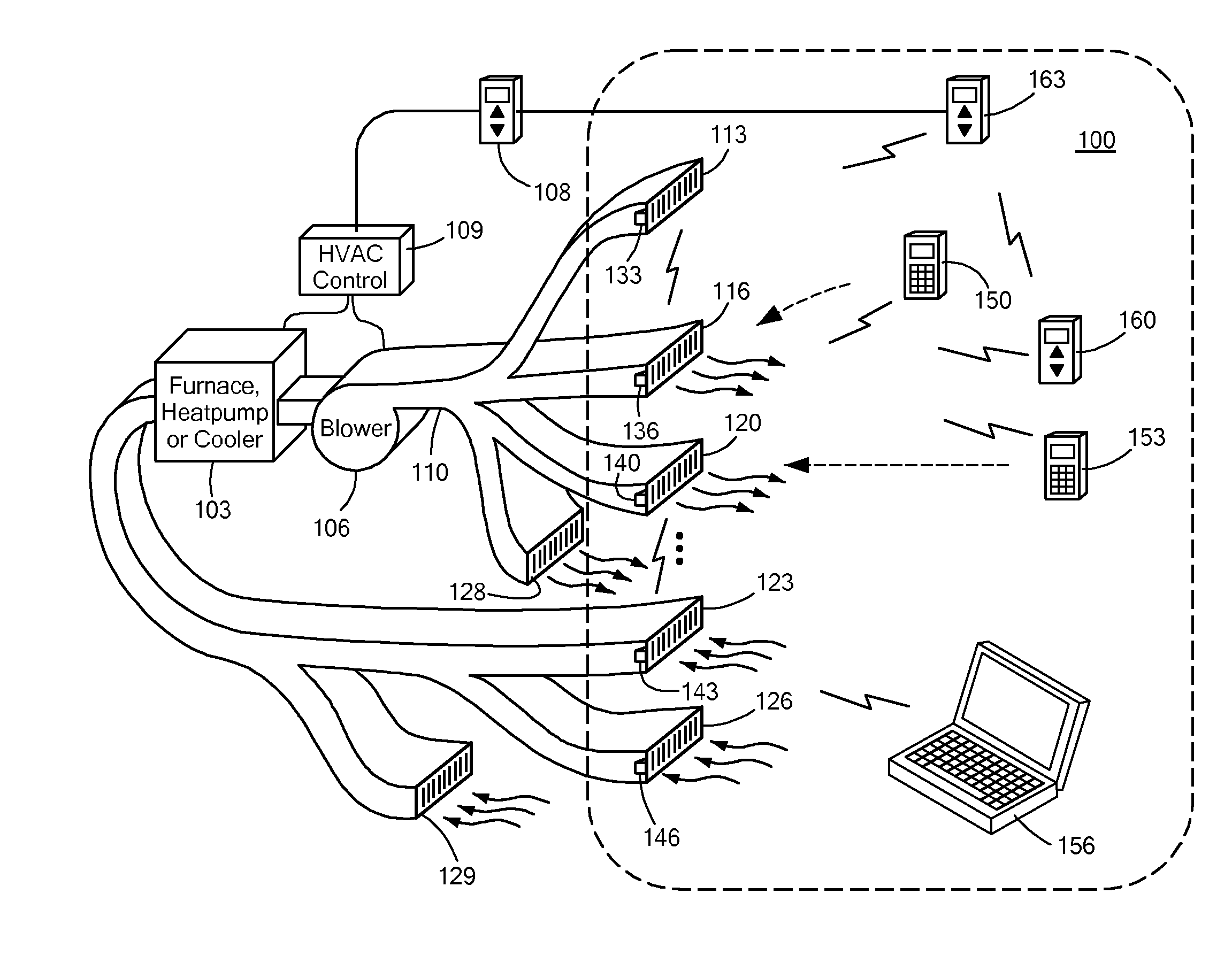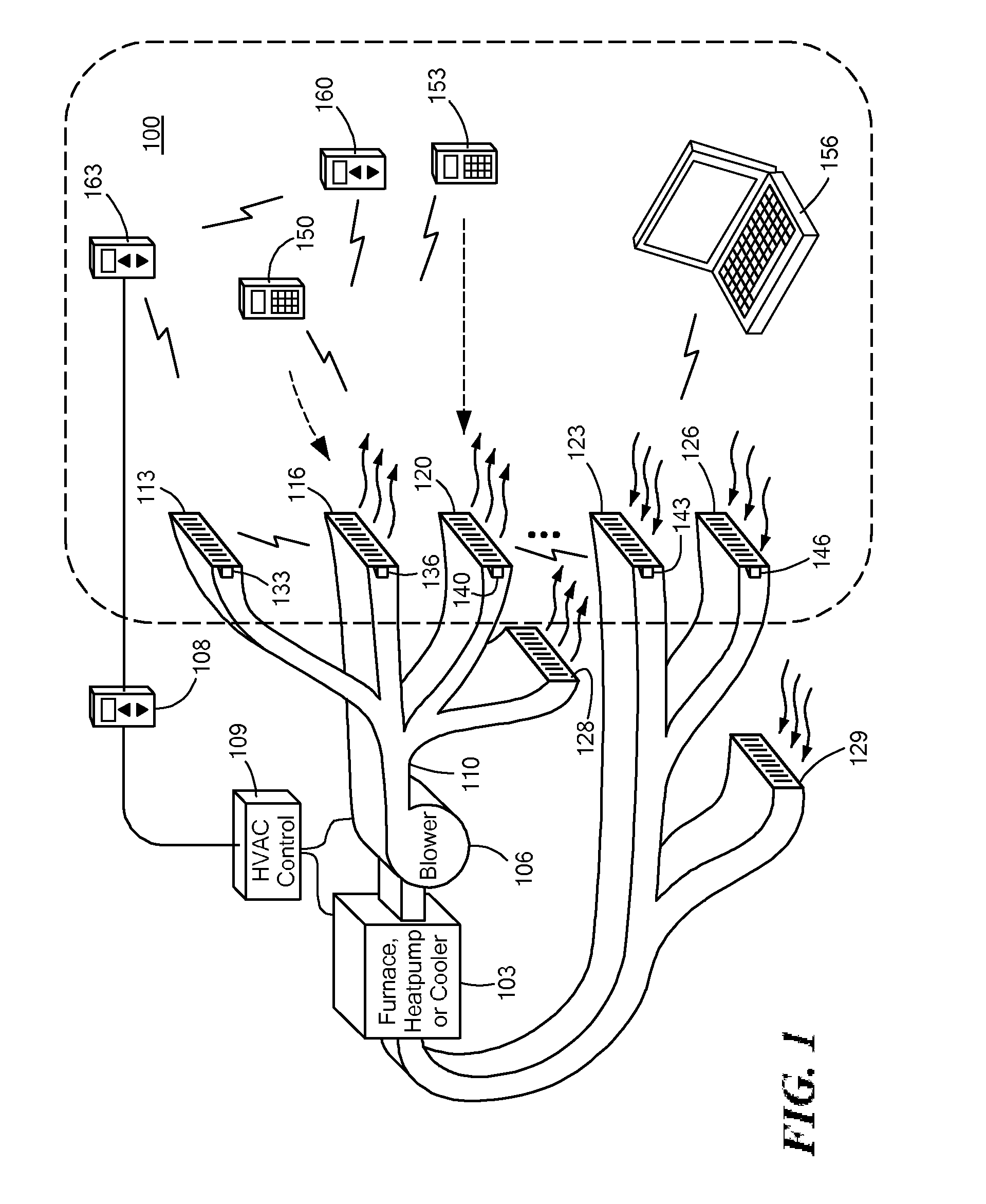Automatically Balancing Register for HVAC Systems
a technology of automatic balancing and registers, which is applied in the direction of ventilation systems, heating types, and static/dynamic balance measurement, etc., can solve the problems of rarely achieving a uniform comfort level in the building, manual adjustment registers are difficult to achieve, and the system is difficult to achiev
- Summary
- Abstract
- Description
- Claims
- Application Information
AI Technical Summary
Problems solved by technology
Method used
Image
Examples
Embodiment Construction
[0067]Definitions. As used in this description and the accompanying claims, the following terms shall have the meanings indicated, unless the context otherwise requires:
[0068]“HVAC system” means a system that provides heat, ventilation and / or air conditioning to a building or a portion of a building. An HVAC system may provide one or more such functions.
[0069]“Array of photovoltaic cells” means one or more cells that convert light into electricity by the photovoltaic effect.
[0070]“Hydronic” means the use of water as a heat-transfer medium in a HVAC heating or cooling system. Examples of heating systems include steam and hot-water radiators. In large-scale commercial buildings, such as high-rise and campus facilities, a hydronic system may include a chilled water loop and a heated water loop to provide for both heating and air conditioning. Chillers and cooling towers may be used separately or together to provide water cooling, while boilers may be used to heat water.
[0071]A “control...
PUM
 Login to View More
Login to View More Abstract
Description
Claims
Application Information
 Login to View More
Login to View More - R&D
- Intellectual Property
- Life Sciences
- Materials
- Tech Scout
- Unparalleled Data Quality
- Higher Quality Content
- 60% Fewer Hallucinations
Browse by: Latest US Patents, China's latest patents, Technical Efficacy Thesaurus, Application Domain, Technology Topic, Popular Technical Reports.
© 2025 PatSnap. All rights reserved.Legal|Privacy policy|Modern Slavery Act Transparency Statement|Sitemap|About US| Contact US: help@patsnap.com



